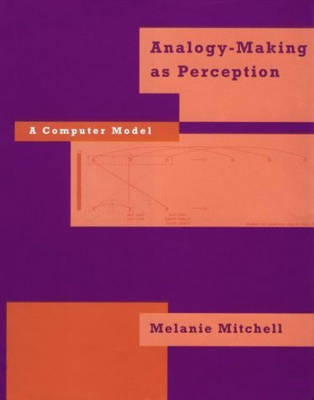Neural Network Modeling and Connectionism
1 total work
Analogy-Making as Perception is based on the premise that analogy-making is fundamentally a high-level perceptual process in which the interaction of perception and concepts gives rise to "conceptual slippages" which allow analogies to be made.
The psychologist William James observed that "a native talent for perceiving analogies is... the leading fact in genius of every order." The centrality and the ubiquity of analogy in creative thought have been noted again and again by scientists, artists, and writers, and understanding and modeling analogical thought have emerged as two of the most important challenges for cognitive science. Analogy-Making as Perception is based on the premise that analogy-making is fundamentally a high-level perceptual process in which the interaction of perception and concepts gives rise to "conceptual slippages" which allow analogies to be made. It describes Copycat - a computer model of analogymaking, developed by the author with Douglas Hofstadter, that models the complex, subconscious interaction between perception and concepts that underlies the creation of analogies. In Copycat, both concepts and high-level perception are emergent phenomena, arising from large numbers of low-level, parallel, non-deterministic activities. In the spectrum of cognitive modeling approaches, Copycat occupies a unique intermediate position between symbolic systems and connectionist systems a position that is at present the most useful one for understanding the fluidity of concepts and high-level perception. On one level the work described here is about analogy-making, but on another level it is about cognition in general. It explores such issues as the nature of concepts and perception and the emergence of highly flexible concepts from a lower-level "subcognitive" substrate.
